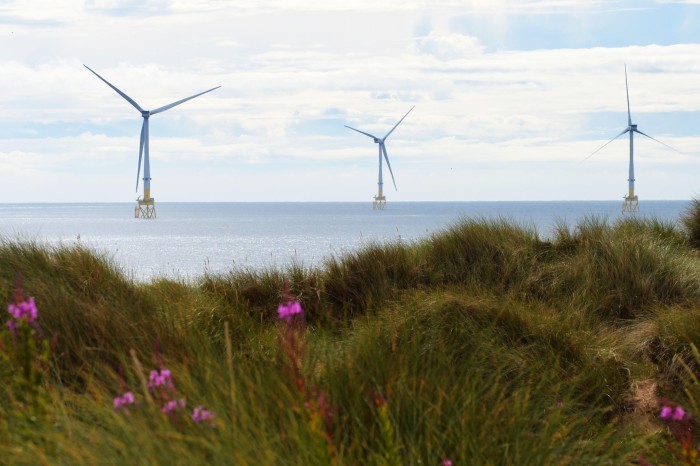Unlock the Editor’s Digest for free
Roula Khalaf, Editor of the FT, selects her favourite stories in this weekly newsletter.
Sir Keir Starmer has vowed that a Labour government would increase investment in floating wind farms off the coast of Britain as part of its attempts to cut reliance on foreign energy.
The Labour leader said floating offshore wind — an early stage technology with only small-scale projects in operation so far — would be among the measures supported by GB Energy, a state-owned firm with an initial £8.3bn budget that would be established if his party won the general election.
The Labour aim of creating 5GW of floating offshore wind (Flow) capacity by 2030 is the same as an existing target set by the ruling Conservative government.
But one Labour aide suggested that the party would provide more extensive financial support to the industry than the Tories: “We are putting money where our mouth is,” they said.
However, Labour refused to say how much GB Energy would commit to the floating wind farms, saying only that Flow would be the new state-owned company’s “first priority”.
The announcement came as Starmer was on a visit to north Wales with Vaughan Gething, the new Welsh first minister. The Labour leader argued that Britain should “take back control of our national energy security” by accelerating clean energy production.
Leading figures from floating offshore wind companies have urged the government to step up its support for an industry they hope could account for half of all offshore wind generation capacity by the middle of the century.
Alan Hannah, UK managing director at Copenhagen Infrastructure Partners, developer of the Pentland Floating Offshore Wind Farm in Scotland, said the costs of building projects should fall as more are built.
“If the government wants floating as part of its energy mix in future, it needs to get the industry moving,” he said. “This is exactly where we started with onshore and fixed bottom — there’s no reason why floating would not do the exact same thing [costs fall].”

James Brown, managing director UK and Ireland of Hexicon, which is developing the TwinHub demonstration project in the Celtic Sea, and has an interest in the Pentland project, also urged the state to do more.
“We think the UK has one of the leading regulatory regimes for the development of floating wind and has understood the key areas that need investment and support,” he said.
But he added that “the level of support currently being provided might cause the UK to lose its pole position — it’s not doing quite enough”.
In September the government failed to attract any bids in its annual auction of state contracts for offshore wind projects after it underestimated the prices for its “contracts for difference” system, which guarantees developers a fixed price for the electricity they generate over 15 years.
The failure has led to concerns about the government’s ability to hit its target of more than tripling offshore wind capacity from 14GW to 50GW by 2030. The Climate Change Committee, the government’s independent climate adviser, has described offshore wind overall as the “backbone” of the future energy system.
Starmer said floating offshore wind was a “significant frontier technology” that had the potential to create tens of thousands of skilled jobs across the country.
But one Conservative official said that when Labour was last in power between 1997 and 2010 it made slow progress on renewables.
“When it comes to homegrown renewables, in 2010 we got just a woeful 7 per cent of our electricity from renewables and now it is nearly half,” they said.











